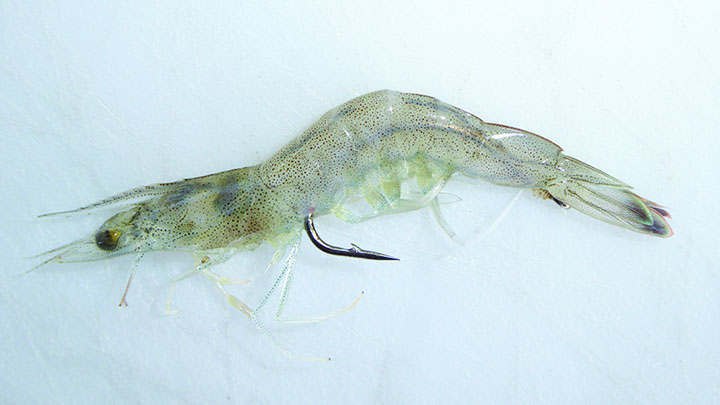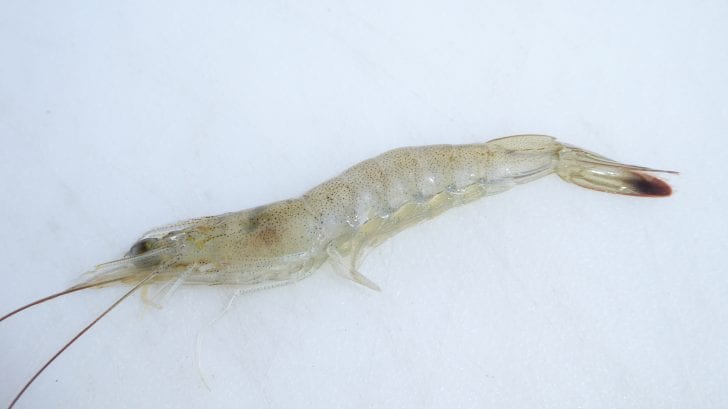October is a loved month in the Lowcountry. It brings us cooler water temperatures, cooler weather, and the best of all, it brings us Halloween. To a lot of kids, this means a bag full of treats, and if fish could have a Halloween of their own, what they would be looking for in their bag of treats is Shrimp, Shrimp, Shrimp and more Shrimp!
In October, Shrimp become more abundant in the Charleston Harbor and in the rivers and creeks of the Lowcountry. They have now reached a good size and a variety of inshore marine species will be feeding heavily on them.
For instance, Spotted Seatrout and Flounder will be two of the inshore species targeting Shrimp. Why? Do you wonder?
Summer Flounder are called Summer Flounder for a reason. They move into the Harbor in the Summer, and during our Winter months, Summer Flounder move back out into deeper waters, but just before they take their Winter vacation, they dine heavily on Shrimp.
This will increase their body weight quickly, whereas a 20-inch Summer Flounder caught during mid-Summer may only weigh 3 ½ pounds, a 20-inch Summer Flounder caught between October and November may weigh 5 pounds.
For those of you that love to eat Flounder, this makes for some thick fillets. I also find that during these months, the Flounder fillets taste sweeter to the pallet.
Spotted Seatrout will also be feeding heavily on the Shrimp. Their goal is to take advantage of the large food supply and bulk up. They will also gain a lot of body girth.
This will be easily noticeable when caught, you will see a thick, humpback on a lot of the Trout that have been gorging themselves well on Shrimp. This will also increase their body weight per inch of fish through October and November.
Other inshore fish species that will also be taking advantage of a heavy Shrimp population are Red Drum, Southern Flounder, Black Drum, Spot, Croaker, Whiting, Jack Crevalle, Pompano, Spanish Mackerel, Sheepshead, etc.
“The trick to fishing with Shrimp is how to place them on the hook”
Fishing with live, fresh Shrimp usually works best. Fresh, dead Shrimp will also work well. Many tackle shops will sell frozen Shrimp, which can be thawed and used on bottom rigs with a decent amount of success.
The trick to fishing with Shrimp is how to place them on the hook. Shrimp is a bait that anglers find can be removed from the hook easily by fish, discouraging a number of anglers from finishing out the day fishing. It may send one home early.
I am going to try to help by showing you a method that I personally use with live or dead Shrimp and even frozen Shrimp that has generated good results and has made it harder for the fish to steal the Shrimp from my hook, at least without them getting hooked themselves.

To start, I use a Kahle hook from either a size 1/0, 2/0 or 3/0. These sizes will depend on the size of your Shrimp. Let’s take a smaller Shrimp, for example. I will take my size 1/0 Kahle hook then I will take the small Shrimp and hold it upside down in my hand with the tip of its tail at the tip of my fingers.
I will then take the point of the hook and insert it just under the tip of the tail in the Shrimp, then I will continue to lace it down through the Shrimp’s tail and come out its underside just where the tail begins. Please refer to photograph B for an example.
This will mimic the Shrimp’s natural curl in its tail, at the same time, it will hide the hook almost completely in the Shrimp. This will also allow for a better hold of the Shrimp while casting longer distances.
Since most of our inshore game fish prefer biting the whole tail of the Shrimp first, this makes a hook set easy, because as the targeted game fish attacks the tail of the Shrimp, he is also inhaling the hook at the same time in most cases.
Now some have asked does this work on live Shrimp, and if so, will they stay alive while fishing them? The answer is yes. There are no vital organs through the Shrimp’s tail.
Hooking the Shrimp this way will still allow the Shrimp to crawl around on the bottom, and of course, being live will also send out distress signals, which will attract fish that are already in tune and waiting.
The Shrimp can be fished under a popping cork, on a bottom rig or on a Carolina rig or even free flip with no weight at all on light tackle. Either way you fish the Shrimp, you will find it harder to keep fish off of them than on them.
So this October, try to find yourself some live Shrimp, head out to the water and give the fish a trick or treat. I hope this helps everyone with their next fishing adventure, and like I always say, until next time, good luck out there and have fun fishing!
To view some fishing adventures, go to my “Fishing with Jiggin’ Jerry” Channel on YouTube or go to www.jigginjerry.net.



